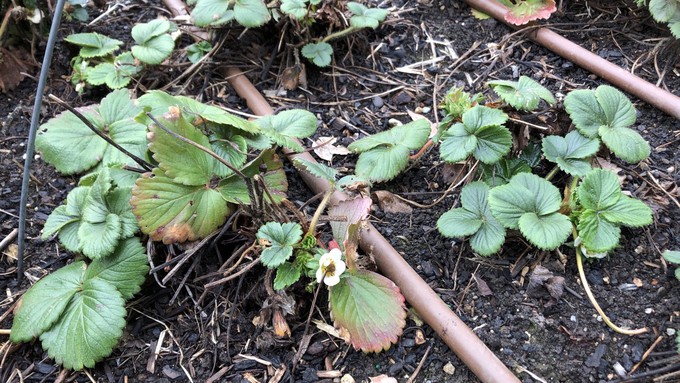
February looks normal (so far); chilly and a little damp

Established strawberries can be fertilized this month. It's also a good month to add new transplants. Kathy Morrison
A little cold, a little sun and a little damp; that’s early February in Sacramento.
After weeks of unusual weather, we seem to finally be settling into something that resembles “normal.” Historically, Sacramento averages February highs of 60 degrees and lows of 42. In non-drought years, February totals more than 3.5 inches of rain, too.
According to the National Weather Service, this week will be close to those averages with most days edging close to 60 degrees and overnight lows in the upper 30s and low 40s. As for rain, we will start Sunday with a storm (beginning Saturday in late afternoon), but that looks to be all for the week.
Make the most of sunny windows and get winter tasks done:
* This is the last chance to spray fruit trees before they bloom. Treat peach and nectarine trees with copper-based fungicide. Spray apricot trees at bud swell to prevent brown rot. Apply horticultural oil to control scale, mites and aphids on fruit trees soon after a rain. But remember: Oils need at least 24 hours to dry to be effective. Don’t spray during foggy weather or when rain is forecast.
* Feed spring-blooming shrubs and fall-planted perennials with slow-release fertilizer. Feed mature trees and shrubs after spring growth starts.
* Finish pruning roses and deciduous trees.
* Remove aphids from blooming bulbs with a strong spray of water or insecticidal soap.
* Fertilize strawberries and asparagus.
* Transplant or direct-seed several flowers, including snapdragon, candytuft, lilies, astilbe, larkspur, Shasta and painted daisies, stocks, bleeding heart and coral bells.
* In the vegetable garden, plant Jerusalem artichoke tubers, and strawberry and rhubarb roots.
* Transplant cabbage and its close cousins – broccoli, kale and Brussels sprouts – as well as lettuce (both loose leaf and head).
* Plant artichokes, asparagus and horseradish from root divisions.
* Plant potatoes from tubers and onions from sets (small bulbs). The onions will sprout quickly and can be used as green onions in March.
* From seed, plant beets, chard, lettuce, mustard, peas, radishes and turnips.
Comments
0 comments have been posted.Sacramento Digs Gardening to your inbox.
Sites We Like
Garden Checklist for week of July 21
Your garden needs you!
* Keep your vegetable garden watered, mulched and weeded. Water before 8 a.m. to reduce the chance of fungal infection and to conserve moisture.
* Feed vegetable plants bone meal, rock phosphate or other fertilizers high in phosphate to stimulate more blooms and fruiting. (But wait until daily high temperatures drop out of the 100s.)
* Don’t let tomatoes wilt or dry out completely. Give tomatoes a deep watering two to three times a week.
* Harvest vegetables promptly to encourage plants to produce more. Squash especially tends to grow rapidly in hot weather. Keep an eye on zucchini.
* Pinch back chrysanthemums for bushy plants and more flowers in September.
* Remove spent flowers from roses, daylilies and other bloomers as they finish flowering.
* Pinch off blooms from basil so the plant will grow more leaves.
* Cut back lavender after flowering to promote a second bloom.
* It's not too late to add a splash of color. Plant petunias, snapdragons, zinnias and marigolds.
* From seed, plant corn, pumpkins, radishes, winter squash and sunflowers.